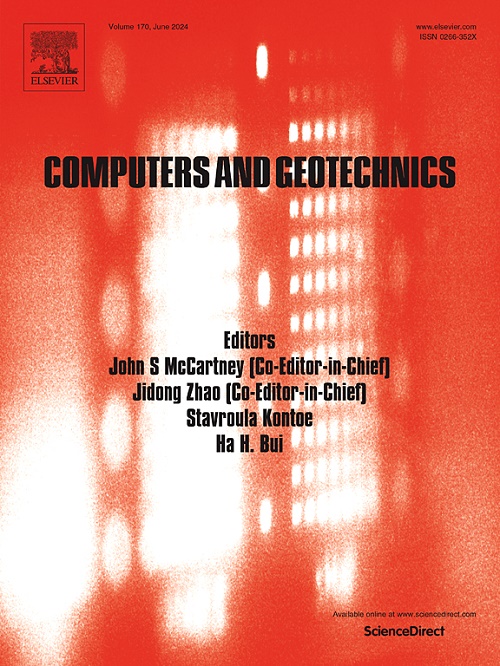Three-dimensional discrete element simulations of inherently anisotropic granular materials subjected to circular rotational shear stress path
IF 5.3
1区 工程技术
Q1 COMPUTER SCIENCE, INTERDISCIPLINARY APPLICATIONS
引用次数: 0
Abstract
Understanding the response of sand to complex loading conditions is vital for practical geotechnical engineering. Circular rotational shear is a special stress path where the magnitudes of three principal stresses vary following a circular stress trajectory in the π-plane with their directions fixed. Although experimental studies under such stress paths are limited, the discrete element method appears to be an appealing approach to examine the response of granular materials to varying complex loading paths in numerical “virtual” tests. This study presents comprehensive numerical simulations of granular samples subjected to a circular stress path under varying conditions, including samples prepared with different bedding-plane angles and densities and subjected to different stress ratios. Both macroscopic and microscopic behaviors are presented and interpreted. A contact-normal-based fabric tensor is adopted in a detailed analysis to measure the internal structure of the granular assembly. The fabric, strain, and strain increment tensors are decomposed with respect to the stress tensor, and the evolutions of these components are presented along with the key influential factors. The results obtained in this study provide useful physical insight for the development of constitutive models for granular soils under general loading conditions.
求助全文
约1分钟内获得全文
求助全文
来源期刊

Computers and Geotechnics
地学-地球科学综合
CiteScore
9.10
自引率
15.10%
发文量
438
审稿时长
45 days
期刊介绍:
The use of computers is firmly established in geotechnical engineering and continues to grow rapidly in both engineering practice and academe. The development of advanced numerical techniques and constitutive modeling, in conjunction with rapid developments in computer hardware, enables problems to be tackled that were unthinkable even a few years ago. Computers and Geotechnics provides an up-to-date reference for engineers and researchers engaged in computer aided analysis and research in geotechnical engineering. The journal is intended for an expeditious dissemination of advanced computer applications across a broad range of geotechnical topics. Contributions on advances in numerical algorithms, computer implementation of new constitutive models and probabilistic methods are especially encouraged.
 求助内容:
求助内容: 应助结果提醒方式:
应助结果提醒方式:


